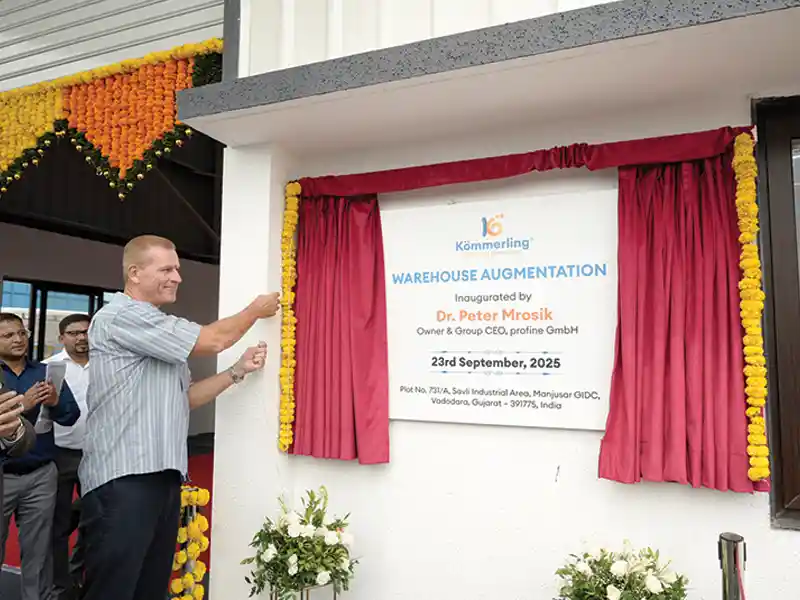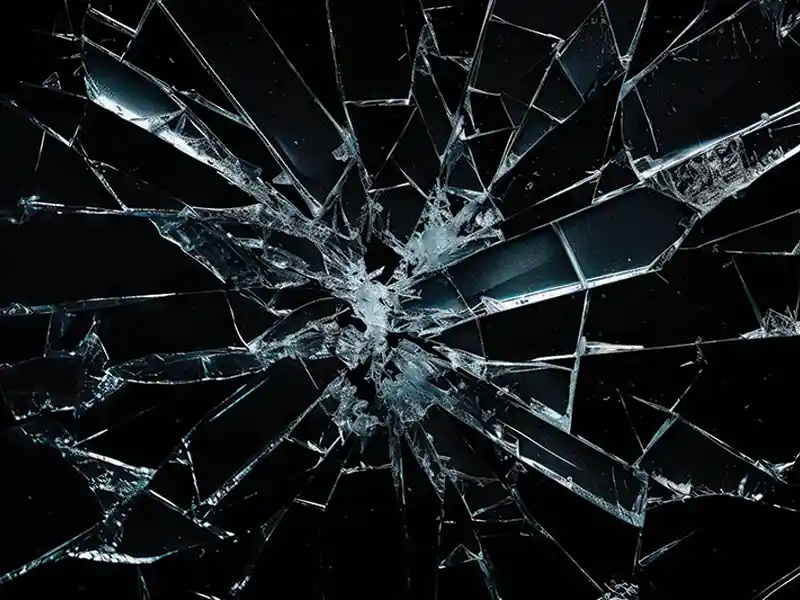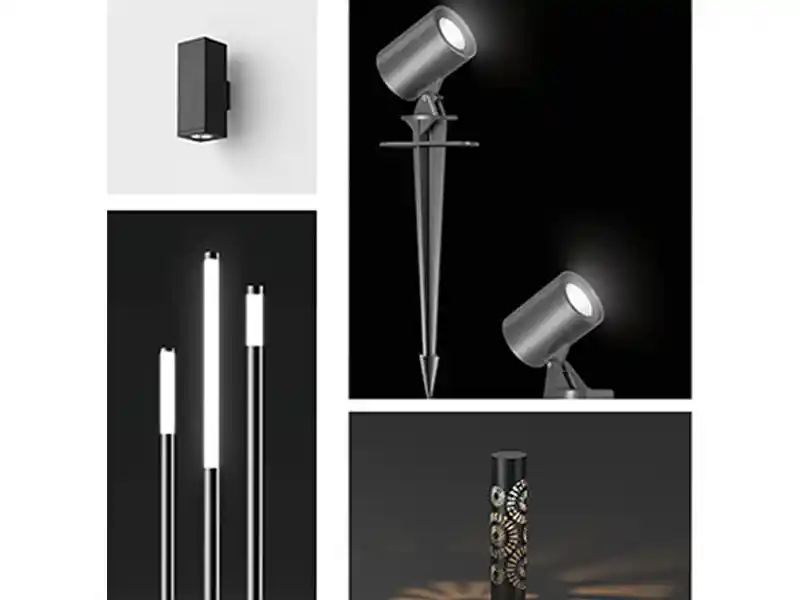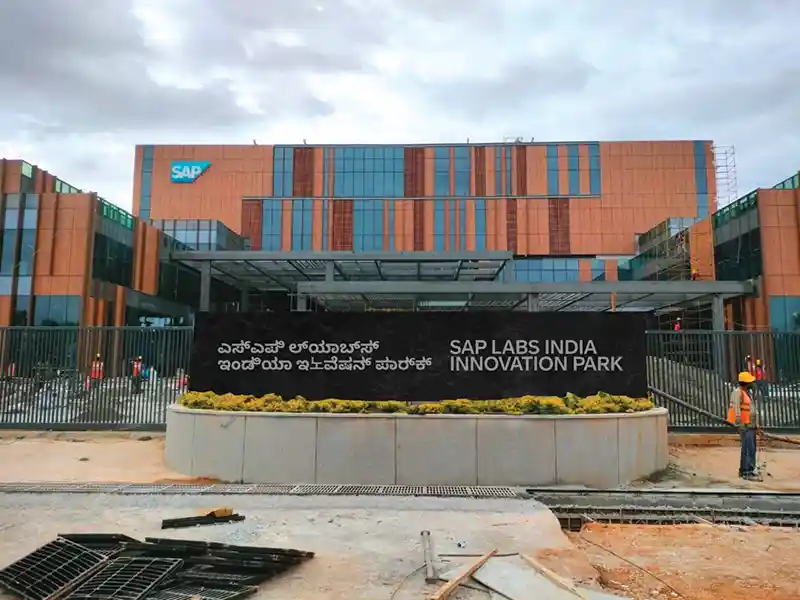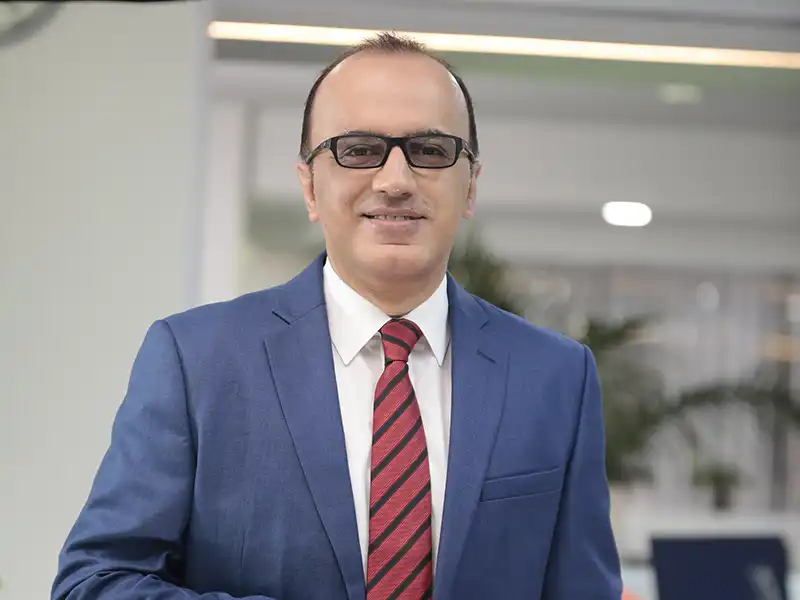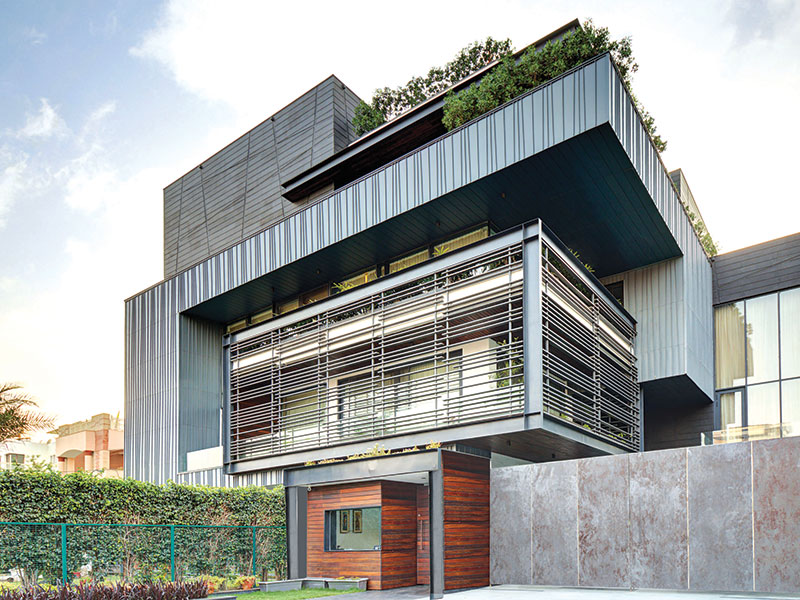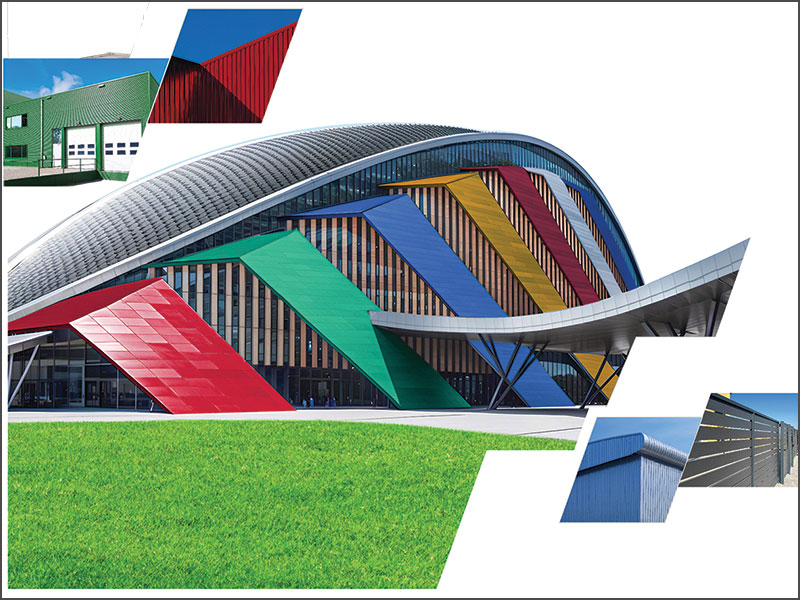By Seema Gupta

Facade design in architecture has established its significance as one of the primary design features that reflects the function and style of any built form. Exploring various new age materials, architects are designing building envelopes that incorporate aluminium cladding panels, glazing, perforated steel membranes, concrete shell structures, etc. “The facade plays a key role in defining the architectural vocabulary of any building. However, apart from aesthetic application, it is imperative to note that the facade can also dictate essential parameters of building design; passive climate control being foremost among them,” say architects V.T. Anand & Neelaksh Mahajan at VBT Consortium.
The façade remains one of the most important exterior elements for building functionality. While the façade helps in defining the unique architectural aspects of the building exterior, it plays a critical role in protecting the building from environmental factors like water, wind, sunlight, etc. and related to energy performance and interior function of a building. “A robust façade is one that is fire-resistant, energy efficient through thermal insulation and can withstand higher wind loads. The considerations begin with the design and desired functionalities and compatibility with the cladding material,”says Niraj Borikar, Head - Marketing, FunderMax India.
Façade considerations begin with the design and desired functionalities and compatibility with the cladding material
Niraj Borikar, Head - Marketing, FunderMax India.
He advises that the cladding material should be able to withstand external weathering agents and offer durability and sustainability to the building façade and believes that façade consultants have been playing an active role by bringing in the desired expertise. FunderMax in India has been delivering cladding products for façade that enhances the appearance of the building significantly and, at the same time, offers functionality and sustainability by delivering long lasting facades with better thermal insulation, energy efficiency and sound insulation.
Transparency, sustainability and protection from heat make Saint-Gobain’s Infinity range an attractive façade material for high-rise buildings, where the need is for lightweight but strong material. Glass weighs less than concrete, offers views of the outside, and is sustainable too.
According to A.R. Unnikrishnan, National Head – Sales & Marketing, Saint-Gobain India (Glass Business), the Infinity range has many benefits such as solar control and advanced thermal insulation. It has a coating that protects against UV rays penetrating the interiors, offers energy efficiency, and minimum visual glare. The glass is engineered to provide maximum daylight indoors while keeping the interiors cool.
In high-rise buildings, the need is for lightweight but strong material. Glass weighs less than concrete, offers views of the outside, and is sustainable too
A.R. Unnikrishnan, Saint-Gobain India
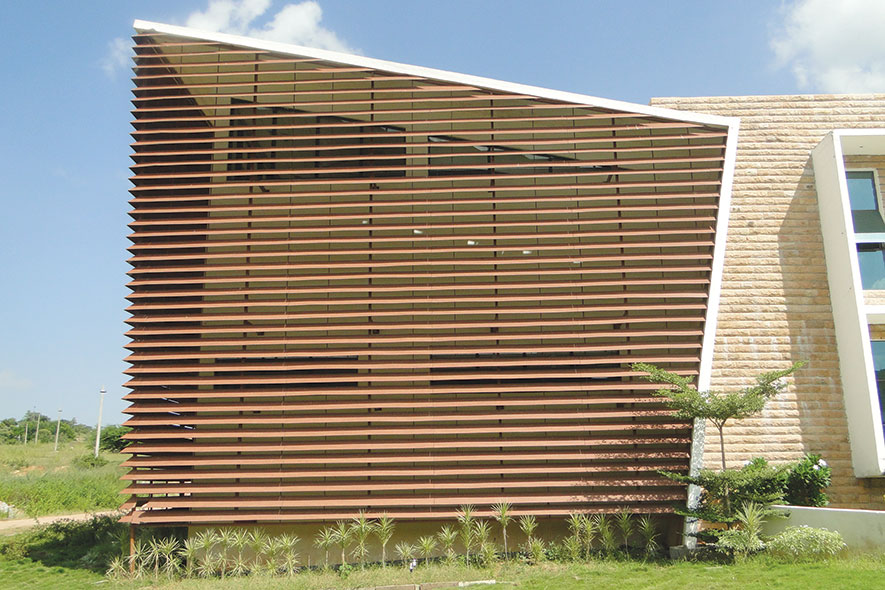
Fundermax cladding at Novodaya Education Trust Private College Raichur
Says Vikas Kesarkar, Vice President- Marketing, Classic Marble Company (CMC), “The façade is one of the most important parts of a building. It not only protects the overall structure from harsh weathers and external climatic conditions but also creates the first impression of the building. The choice in design and material of a façade is determined by factors such as the size and type of building, its geographical location, weather conditions it is exposed to etc. In corporate buildings energy efficiency is the main attention while considering the material for facades whereas in residential buildings, appearance becomes equally important.”
In corporate buildings energy efficiency is the main attention while considering the material for facades whereas in residential buildings, its appearance becomes equally important
Vikas Kesarkar, VP- Marketing Classic Marble Company
He informs, “Today, the market offers a variety of materials for facades with abundant choices in designs and patterns. Large size porcelain tiles and high-pressure laminates are in trend for their aesthetic value and sturdiness. CMC offers two broad options for residential and commercial buildings viz. Techlam full body porcelain slabs and Exterior Clad Laminates (ECL) high pressure laminates. Globally, Techlam porcelain wall clads are used for a majority of structures. The products have anti-graffiti properties and offer flexibility in installation. The 3mm thick Techlam slabs are available in 3000mm x 1000mm and in 40 unique shades and designs.”
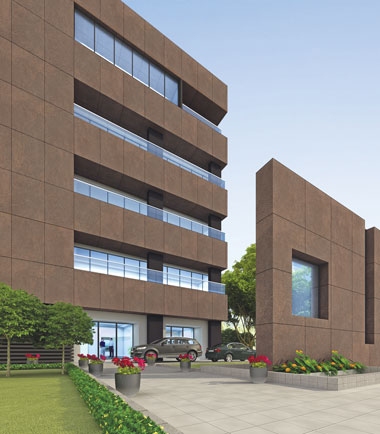
CMCTechlite Exterior Clad Laminates
Amit Bhadu, Marketing & Communication Manager, Technal India - Sapa BS India, comments, “Creating façade solution for high-rise buildings is an artful application of science driven by experience. An effective façade system is a perfect mix of structural engineering, building physics, material science, weatherproofing technology, architectural detailing, production engineering, construction management and buildability. Today, facade accounts for a significant proportion of project cost, hence the engineer’s role should be to balance aesthetics and performance requirements to create an economically viable and stable solution. High-rise façades are becoming more complicated day by day as architects try to push the limits in favour of ambitious multifaceted structures.
High-rise façades are becoming more complicated as architects try to push the limits in favour of ambitious multifaceted structures
Amit Bhadu, Marketing & Communication Manager, Technal India - Sapa BS India
The façade system must prove itself to be extremely stable to all external conditions like sunlight, temperature, water, wind and gravity- faced by high rise buildings. For overall façade design, the following general parameters should be considered:
- Architectural requirements/restrictions
- Thermal performance to be achieved (U-value,g-value, layer temperatures)
- Flexibility (adjustable performance)
- Interaction strategy with HVAC systems(extract rate, natural ventilation)
- Loads
- Maintenance (interior or exterior)
- Investment vs. running costs (integrated view)

